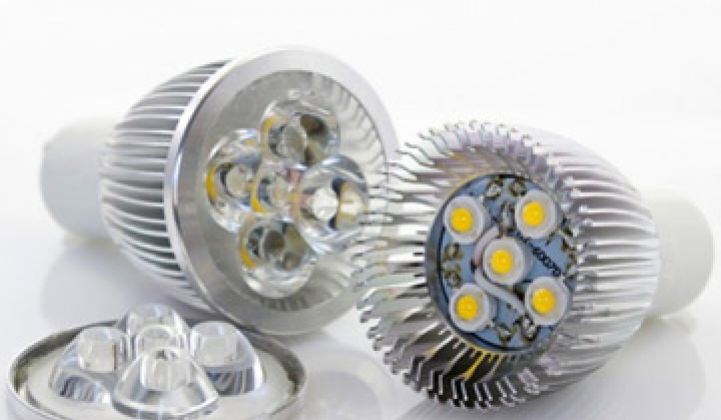A recent report from the U.S. Department of Energy confirmed that LEDs are indeed the most environmentally friendly light bulb on the market. Inching past the CFL in life-cycle impact and completely blowing incandescent bulbs out of the water in efficiency, the LED has the ability to reduce home lighting costs and create a safer manufacturing process. Still, despite these obvious benefits, LEDs have yet to go mainstream.
A higher price has been a constant roadblock for LED manufacturers looking to edge out the entrenched competition. According to a new industry report, however, shifting focus away from package efficiency and toward technological innovation could help slash the cost of LEDs in half within the next eight years.
Focus is now shifting from the package to the surrounding systems, with experts predicting that innovation in areas such as thermal management, drivers, and optics will help to halve prices of LED bulbs to $11.06 in 2020, according to the study by Lux Research. To arrive at this conclusion, researchers studied the key elements of cost in a 60-watt incandescent equivalent LED bulb, as well as the technologies available to accelerate cost cuts.
They found that active thermal management technologies now in development, such Nuventix’s SynJet, will lead to cost savings over aluminum-based solutions; innovation in more efficient dimmable drivers will attract new customers and bring about a 1 percent cost savings; and the fabrication of new secondary optics, which improve the shape of the beam and the ability to collect more light from primary optics, could shave another 5 percent of the LED’s total cost.
***
Editor's note: This article is reposted in its original form from EarthTechling. Author credit goes to Beth Buczynski.



